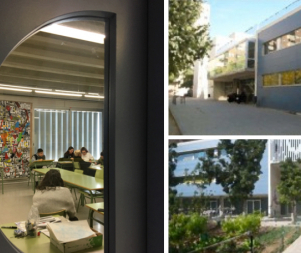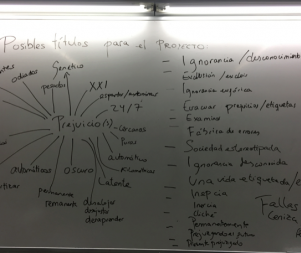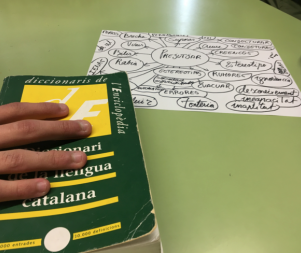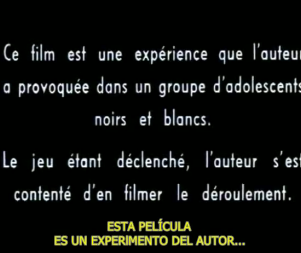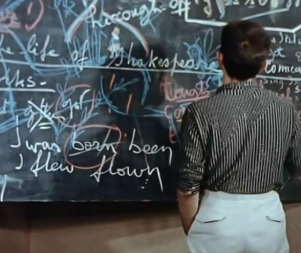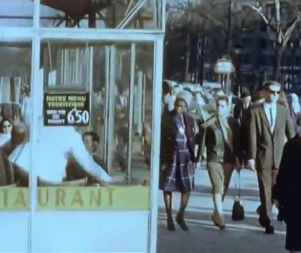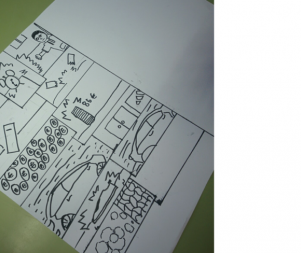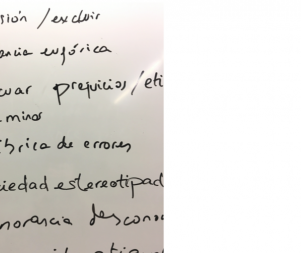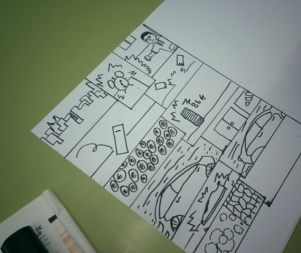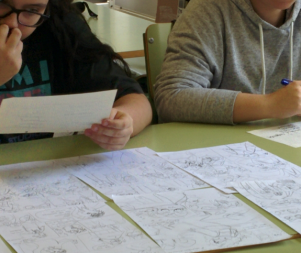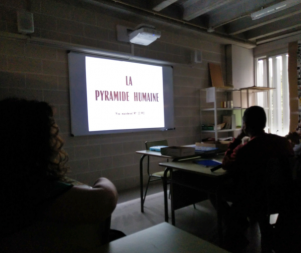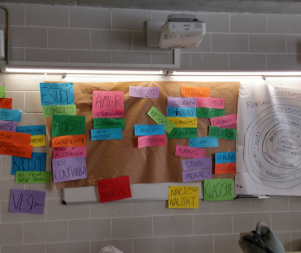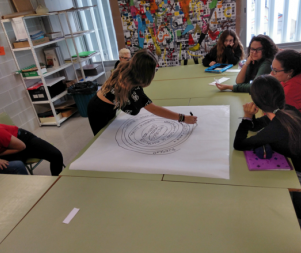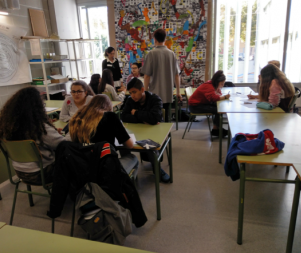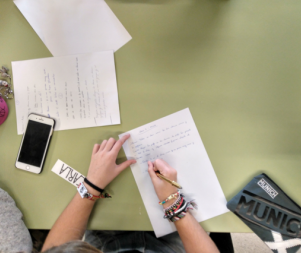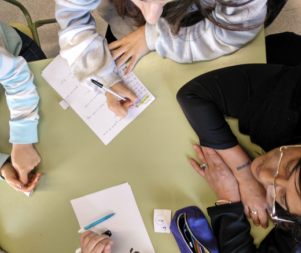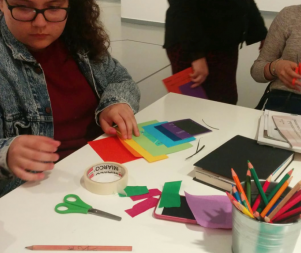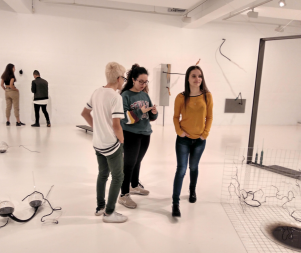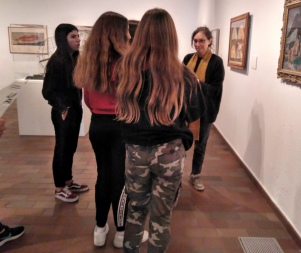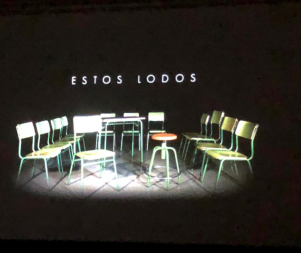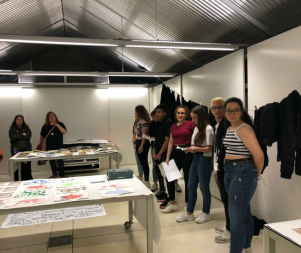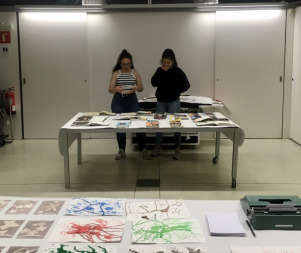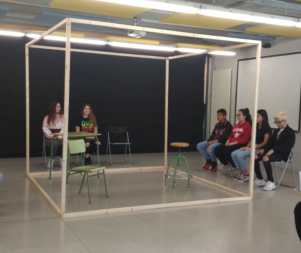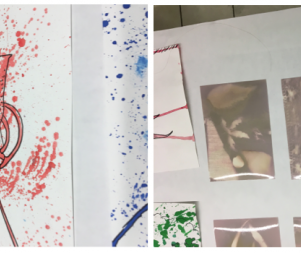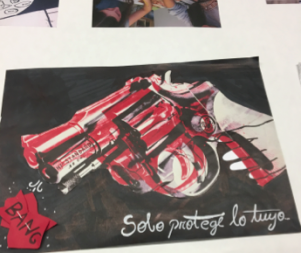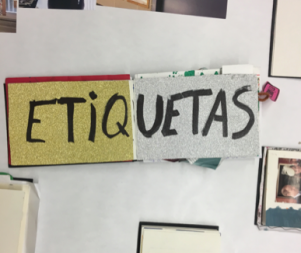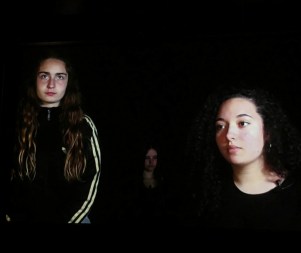- 14th EDITION 2022 / 2023
- 13th EDITION 2021 / 2022
- 12th EDITION 2020 / 2021
- 11th EDITION 2019 / 2020
- 10th EDITION 2018 / 2019
- 9th EDITION 2017 / 2018
- 8th EDITION 2016 / 2017
- 7th EDITION 2015 / 2016
- 6th EDITION 2014 / 2015
- 5th EDITION 2013 / 2014
- 4th EDITION 2012 / 2013
- 3rd EDITION 2011 / 2012
- 2nd EDITION 2010 / 2011
- 1st EDITION 2009 / 2010
Ro Caminal IN RESiDENCE at the School Lluís Domènech i Montaner
The project's work and development process
The sessions we carried out at the start were aimed, first and foremost, at getting to know the students and enabling them to discover Ro Caminal's work and the things done at Espai 13. Besides presenting the artist's work (we screened some of his videographic pieces) and the institutional part (we explained what Espai 13 and the cycle were), in order to get to know the students, the artist asked them to make a comic — like a storyboard — about what they do at the weekend, which was later shared and commented on.
After that, a couple of sessions were dedicated to a screening of Jean Rouch's film La pyramide humaine (1961) and identifying themes in common with our everyday life, what they were able to identify with and what not,, to choose scenes for filming. The students made a shared and personal map of themes, characters and so on. They also had a technical session with Rafael Ruiz to understand the maps, sequences and audiovisual resources used by the director...
Ro Caminal's proposal was that, by building on the screening, and by identifying things in common, the students would put themselves in a new film.
La pyramide humaine
(Synopsis of the film: The arrival of a new student, Nadine, is the starting point of an analysis of inter-racial relationships at the Lycée Français of Abidjan, in the Ivory Coast. Brought together by Jean Rouch, the students play themselves in a “fiction” that develops through the new relationships between blacks and whites, dramatising the bonds of friendship and romantic relationships.)
According to the students themselves, they initially thought that the film and their daily lives had nothing in common with each other, but after mapping it all out, issues and prejudices affecting them closer to home gradually cropped up.
It was here that the artist proposed an activity he called “Salsa rosa” [pink sauce], which involved imitating an improvised television programme, with two sides, one for and the other against, with the students themselves acting as moderators and the audience, to discuss and debate an issue chosen by them: homophobia.
They then began to write their scripts, not without difficulties, owing to the capacity to be succinct needed to write a script. First they tried to write the scripts collectively, but they then realised that it would probably be better if each did their own section from their personal experience.
The first quarter of the year saw a visit to the Miró Foundation (5 December) and the Lara Fluxà exhibition being held there as part of the Espai 13 “Un monstre que diu la veritat” season, with the artist and curator, emphasising the links between the exhibition and season and the In Residence project. The students also took the opportunity to visit the Lee Miller and surrealism exhibition. The view was that, though not a Espai 13 programme, the photographer's approach to the subject matter and the framing and selection of work were very useful for the process they were embarking on. Based on this visit, the Miró Foundation’s Education Department proposed an expressive camera-free photographic activity for them using natural elements.
One of the things we soon noticed was the rigidity of the students in front of the camera. On the one hand they are very young and were not a natural group (they came from several class groups) and we suppose it was hard for them to get over their embarrassment and shyness. On the other hand, with a couple of exceptions, they had no acting, theatre or dance experience, and in joining the project they had not expected to end up acting. The question is that the artist suggested inviting someone to do a session with an actor or actress to acquire acting tools and confidence in front of the camera. We received help from the actress and singer, Laura Guiteras. Her session was a complete success thanks to her energy and the acting dynamics and exercises she proposed, which the students loved. In addition, the session came at a rather tough time in the process, where students were unable to understand the processes or see the relationship with art of everything they were doing. In fact, they found it strange and noted the lack of drawing and plastic arts.
One of the ideas from the very start was to involve the students in a sort of “making of”, to find out how to use the camera and editing software, but we encountered a problem: a lack of suitable technical equipment. So, making a virtue out of necessity, we decided to offer everyone a blank workbook so they could sketch an “artist diary” of the process, in artist-book format, with guidance from teachers and mediators. The artist diary gave expression, using various artistic techniques, to thoughts and issues that cropped up from that point on in the sessions.
The script side was given a boost through the visit the group made once again to the Foundation and, more specifically, to Vanesa Varela’s exhibition in Espai 13, “A la mà, la memòria”, with a guided tour from the curator. The students were told about issues such as how memory stays in the body and movement (for example, the movement of sewing or weaving), and how we can extract it with sketches. They also visited the Lina Bo Bardi exhibition, with a guided tour from Mercè Jarque, a member of the mediating team (Educational Department), who emphasised the importance of sketching in the creation process and drawing as a thinking tool. To finish off, the students practised drawing or collage techniques in their students’ books (artist diaries).
Returning to the sessions at the centre, having decided certain visual aspects of the film with the students (such as costumes), the artist brought into school a structure shaped like a wooden cube, which she used as a frame or stage and which she had used in other productions. The cube gave not just a physical but also a mental framework which was used by the students for concentrating and having a notion of “going up on stage”. We then started our rehearsals, which were recorded so we could have extra material.
The group dynamics of the “Salsa rosa”
While we presented the project to teachers, to tell them what we were doing and look for possible involvement from other projects and subjects, which ultimately did not happen. The presentation was delivered by the mediating team, the artist, who put together a video of what had been carried out so far and, in particular, by two of the students, who had prepared their talk very carefully. The video made by Ro Caminal, containing recordings of the group dynamics of the “Salsa rosa” and other moments from the course, can be viewed here
https://vimeo.com/316877128
The last term of the school year involved rehearsals and the final recordings. Finally, a couple of sessions were dedicated to preparing the final presentation, the layout of the hand-out programme, the performance and the artist-books exhibition.
There were still a couple of departures from the initial premises that occurred: one of the group's students left the school halfway through the school year. Her narrative on prejudice was performed by one of her classmates. In addition, a couple of participants were new immigrants, unable to speak Catalan, Spanish or any other common language, and could barely speak English, so, for all the efforts made for good communication with them, they missed a lot of the process. It was really difficult for them to tell their narrative and they did no in fact appear in the video. What we did manage to do with them was get them to participate in other ways: taking photos to document the process, helping them with the mise-en-scene, with the artist diaries and so on. We also encountered a situation of a student whose parents, on finding out what her participation involved and the prejudice it concerned (homophobia), decided she should not appear in the film. That occurred at a time when we were running against the clock with our recording and editing. The crisis was resolved by cutting the excerpt she appeared in, but it got us thinking about how we could avoid similar issues in future, by involving families more during the process or giving them more information, bearing in mind that the students are minors.
The group, despite coming from different classes (all in their 3rd-year of compulsory secondary education), ended up bonding together fairly well and acting as a group. One of the things we think we achieved was to broaden their view of art as something that goes beyond paintings and painters, that videos are an artistic tool, that artistic processes are long, sometimes tough and maybe have effects that are not anticipated at the start. We believe, above all, that we achieved one of this project's big goals, which is also a hallmark of the artistic work Ro Caminal carries out with groups: that the students understood that the process was as important as, or even more important than the final result in itself. And, moreover, that the work they carried out involved reflection and artistic thought, allowing them to be intellectually pervaded by the issue of prejudices and that we are all also the other.
Working on the comic in the early sessions
Screening of La pyramide humaine
Work based on Jean Rouch's film and choosing themes
Visit to the Lina Bo Bardi exhibition and subsequent expressive work
Visit to the Lara Fluxà and Lee Miller exhibitions
Teamwork
Blog
This entire project featured activities and dynamics involving research, reflection, debating and sharing, experimentation and artistic and audiovisual techniques, accompanied by the two teachers Ada Vázquez and Teresa García, from the mediation team (Mercè Jarque, from the Joan Miró Foundation’s Education Department; Pilar Cruz, as the curator of this year’s Espai 13 season), the guests and above all the artist Ro Caminal.
A recording of the process by the participants can be found on the blog:
http://blocsenresidencia.bcn.cat/domenechimontaner1819/

